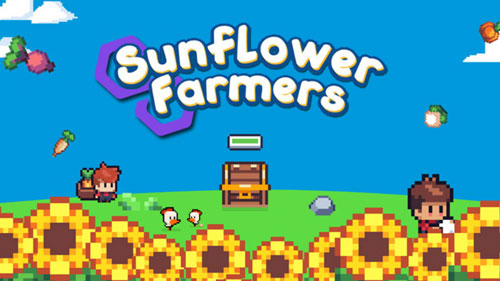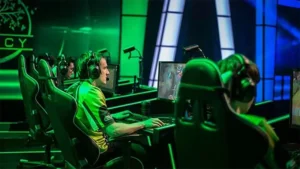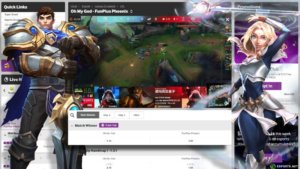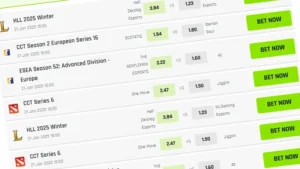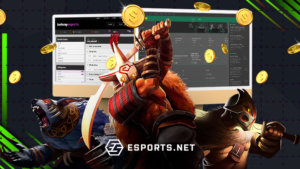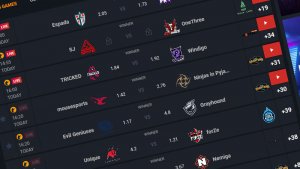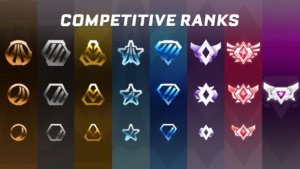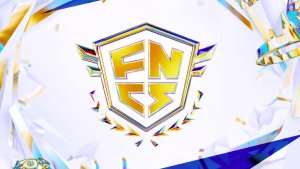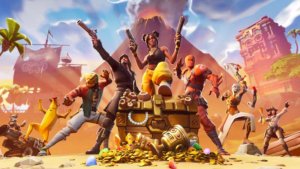It has been quite a while since the first cryptocurrency has been introduced, and at the time, no one really expected anything to happen from it. However, after just a few years, the first crypto boom occurred, and everyone wanted to become a part of it. It was like a modern version of the 1800s gold rush. As years passed by, crypto evolved, it raised and fell, people gained interest, lost it, and then gained it again.
After a vicious cycle of becoming popular and unpopular over and over, crypto slowly intertwined its way in all kinds of sources, and the one we are going to focus on the most is how it is becoming a very important aspect of gaming. Esports crypto is gaining more interest from various organizations as well as developers, especially with the introduction of NFTs.

What is crypto and how does it help esports?
Before we get into any details, it is important to cover what cryptocurrency is in its essence, and how can it evolve into something bigger. What can crypto for esports do? Well, the answer to this question is actually rather simple.
While regular payments require authorization from the government or banks, a crypto one does not, which allows gaming organizations and players to play with each other internationally without having to go through those loops while also having a secure way to finalize their transactions. There is no need to share their identity, and gamers can use cryptocurrencies to withdraw their funds anywhere in the world.
Betting On Esports With Crypto
One of the most meaningful esports crypto developments in recent times is making betting on esports easier and safer. Organizing any kind of betting in various countries is a tricky procedure, and a lot of people do not have the option to bet with their local currency, or they simply do not want to do it because they have to validate their identity, which makes them feel insecure if they win big.
Crypto for esports betting does such a great thing in this area, as anyone can organize a safe betting platform through a crypto wallet, and everyone can participate in crypto esports betting if they happen to have some kind of cryptocurrency. Even if a person would not have the correct cryptocurrency, the system would change it automatically, which is the beauty of crypto.
Betting on esports with crypto can be quite an easy way to make money if you are familiar with the esports scene, especially if you do some bitcoin esports betting where the stakes are high. Of course, you might not find esports betting organizations for all of the games out there, but with time, it will become a norm to have an option for crypto esports betting of some sort even upon release of a game.
[cta id=2581 type=geo]
Crypto Exchange Options
There are various things that a person can do with a cryptocurrency, and one of the most important things that they can do with it Is exchange it for all kinds of things. Naturally, the first thing that you can do with a cryptocurrency is simply to exchange it for a different cryptocurrency than the one you have, or for a real currency like the United States Dollars, Euros, or your local currency.
However, there are more crypto exchange options. There are already thousands of places where you can use your cryptocurrency wallet to pay for physical items, and in some cases, you can even pay for food at places like Burger King and McDonald’s in certain countries. But those are not the things most of us here are interested in, but instead, we are interested in how one can exchange crypto for esports-related things.
NFTs – Non-fungible Tokens
Something that a lot of people are wondering when they start getting interested in the world of crypto games and esports crypto events is what are NFTs and how can they get them? Well, NFTs are cryptographic assets on a blockchain that have unique identification codes. They are represented as images that can be easily told from each other as they all have a significant detail that is different.
One of the biggest markets where you can exchange real currency or cryptocurrency for an NFT is the DraftKings NFT marketplace. There are over a million NFTs to purchase, and more shall come as time goes by. The only issue with this marketplace is that it is blocked in certain countries, but using a VPN does solve that issue.
While a lot of people associate NFTs with various images of monkeys where they have different hairstyles and things like that, there is actually a lot more to it. Crypto esports is the place where that can be noticed the most, and these esports essentially revolve around games where you can purchase and NFT that you can play a game with.

Places, or games where you can purchase an NFT and start playing a game, get your money back, and potentially start making a huge income are called crypto gaming platforms. These platforms are essentially games where you have to invest in an NFT to play the game, or you could join a crypto gaming guild if your funds are short to start you off.
These games are all a part of a certain blockchain, and some of them even have their own blockchain, which is why they are often referred to as blockchain esports. Of course, the most popular one tends to be either the BTC or ETC blockchains, which are usually the currency you would need to have to start you off in these crypto games.
When it comes to picking out the best crypto wallets for gaming, it essentially depends on the game you are interested in playing. Since the market often shifts, discussing this, in general, is rather tricky, so it is just best to check which wallets are supported by the game of your interest.
What are the most popular play-to-earn crypto games?
Axie Infinity
By far the most skill-based game when it comes to esports crypto is Axie Infinity. It is a game that is very similar to Pokémon, as each NFT that you can purchase and use in your team is a little monster that has certain abilities and stats.
In Axie Infinity, you need to purchase at least 3 Axies (NFTs) in order to form a full team. When it comes to the starting investment point for a good team, it really depends on the market, and you should be checking it from time to time to find a good starting price.
Once you form a team, you can start playing PVP games in the arena mode and climb the competitive ladder. The more you end up winning, the more you are going to make back your investment. There are also various other ways to earn crypto in this game, even without playing it, which is to essentially buy Axies cheap and sell them high as you would do with cryptocurrency in a stock market.
Sunflower Farmers
While this game is not that competitive like Axie Infinity, it is definitely the most popular one. This game is very similar to Stardew Valley, which is a game where you can take care of a farm at grow various crops. It is a very simple and fun game that you can play in your free time and earn some money.
Splinterlands
If you are a fan of card games, then you will probably be into Splinterlands, as it is one of the most popular crypto card games out there. You can play and trade with players from all over the world from your desktop or from your mobile phone.
It follows the essential rules of most monster-fighting card games, and while it does have similarities to the previously mentioned Axie Infinity, it can be still easily said that it is completely different and that it will appeal to a different pool of people.
What are the other ways to make money with crypto?
Since the world of crypto is so big, it is actually quite difficult to cover all of the answers to the “how to make money from cryptocurrencies” question. We already mentioned some of the most popular ways such as crypto esports betting, and esports NFT games, and a few other points of interest.
Of course, in essence, you can also make money with crypto by doing investments, trades, stakes, crypto social media, you can become a crypto broker, and of course, you can mine the cryptocurrency yourself and sell it. The world of crypto is still growing and evolving.
While no one can be sure what will crypto for esports do in the future, while the action is still fresh, we strongly advise that you check it out and give it a try. Esports crypto events and NFT games are not only extremely fun to bet on, but playing and earning money by doing so is even more fun.

